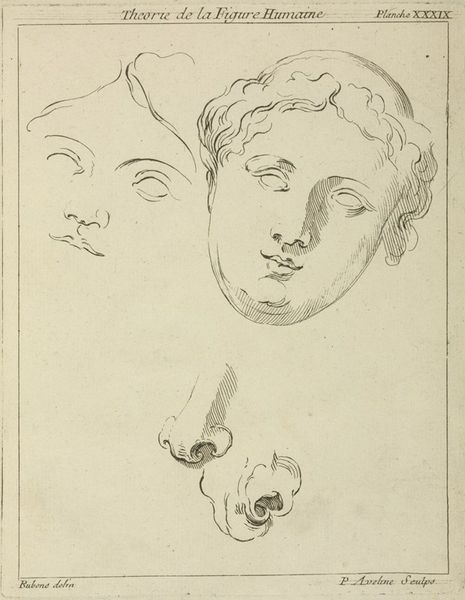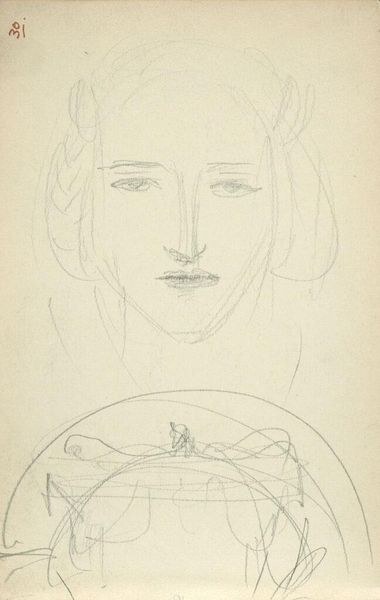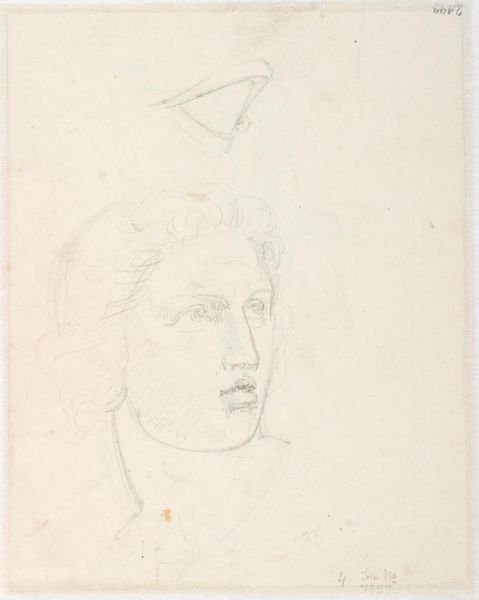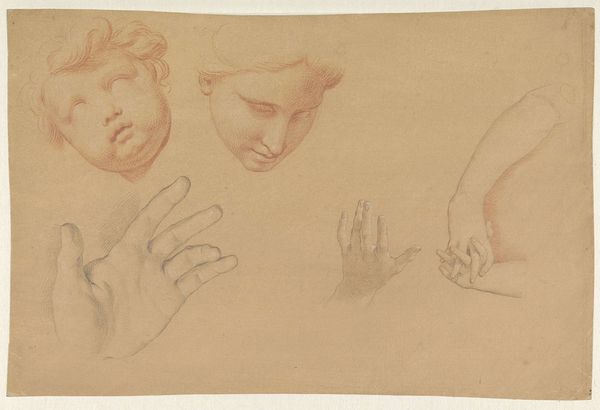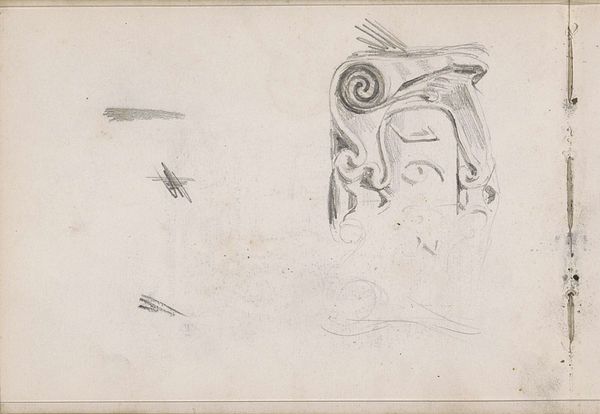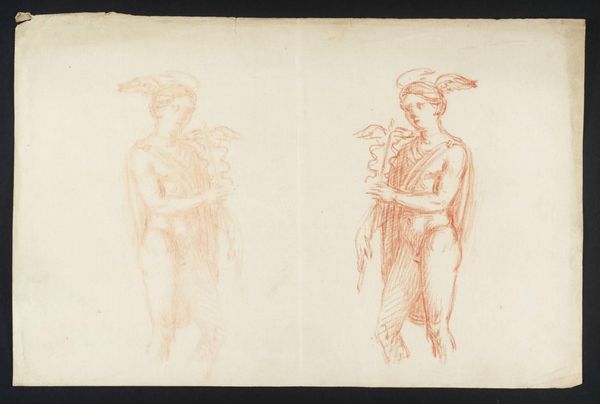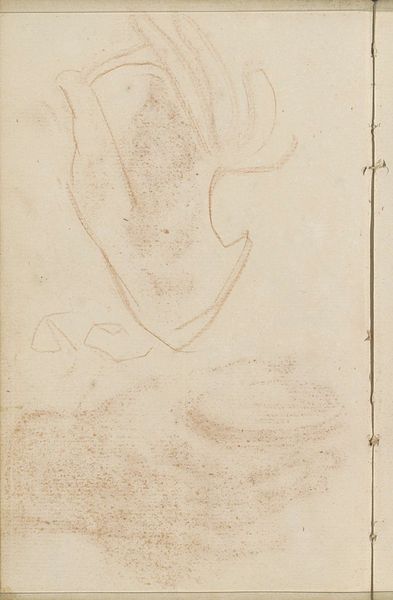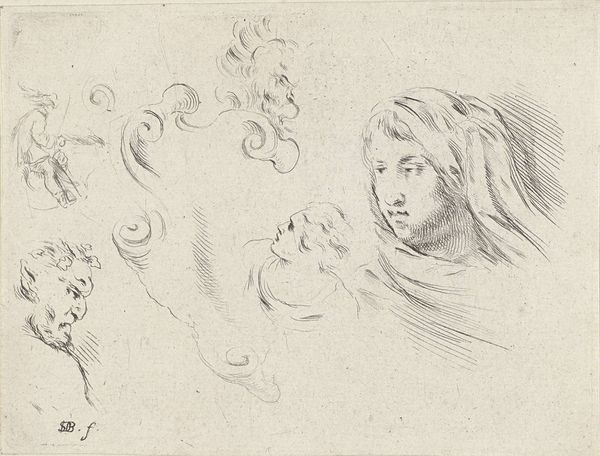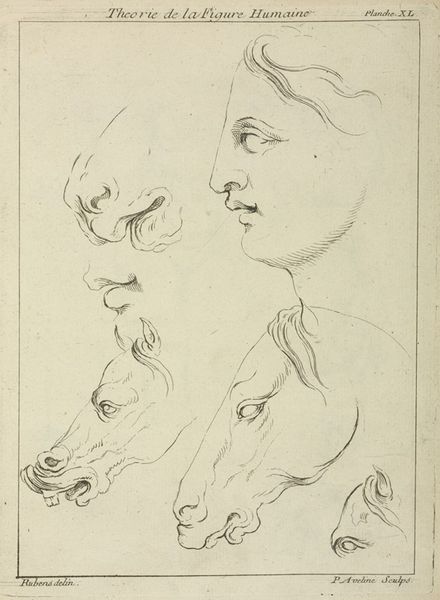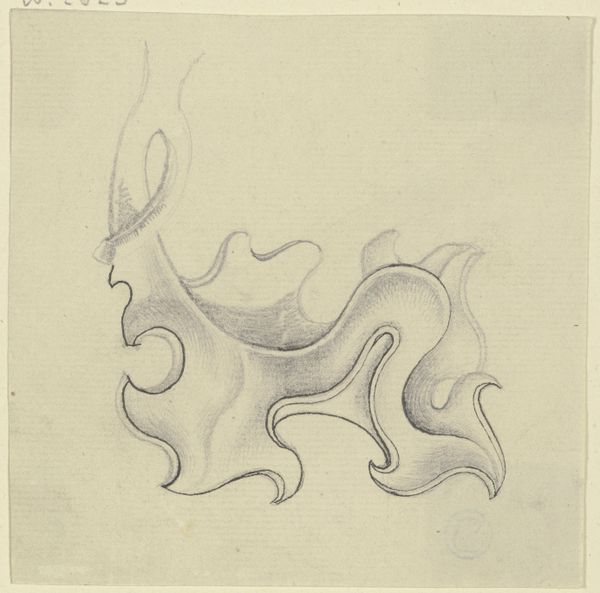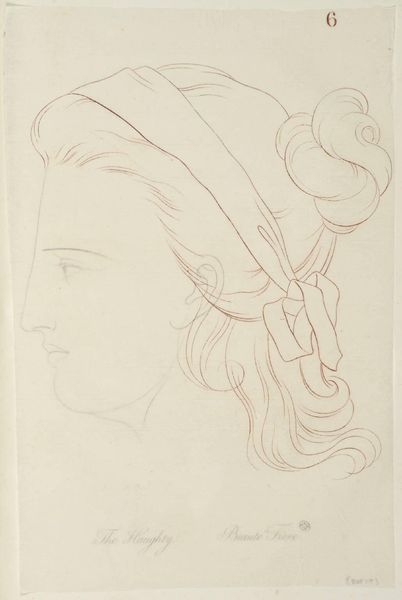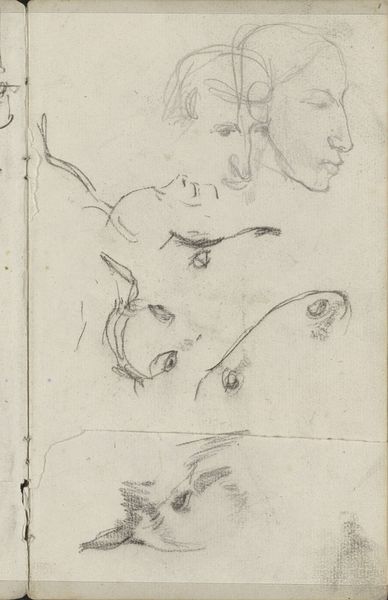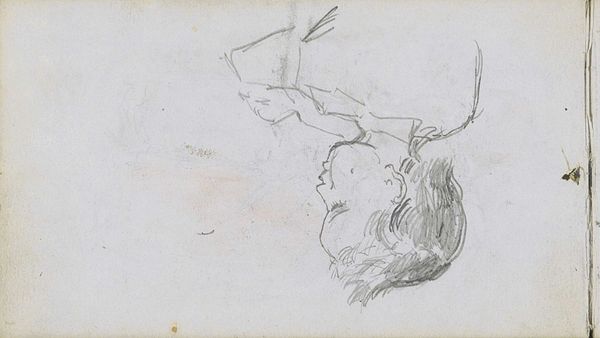
drawing, pencil
#
portrait
#
drawing
#
figuration
#
pencil drawing
#
pencil
#
portrait drawing
#
academic-art
Copyright: Public Domain: Artvee
Editor: This is "Ansiktsrelieff; fot; katter" – which translates to "Face Relief; Foot; Cats" – a pencil drawing from 1842 by Adolph Tidemand. It's really just what the title suggests: a study of disparate objects. What strikes me is how incomplete everything feels; none of the images are fully fleshed out. How would you approach analysing this piece? Curator: I would start by examining the distribution of the elements within the pictorial space. Note how the relief and foot occupy the central and lower portions, establishing a vertical axis, while the cats are scattered towards the periphery. How does this arrangement guide the viewer’s eye, and what kind of spatial relationship is created by this dispersed composition? Editor: It does feel very... scattered, almost like a collage before it's glued together. Are the cats meant to provide some sense of balance to the heavier elements below? Curator: The placement indeed contributes to the overall equilibrium, or lack thereof. The cats, seemingly rendered with equal attention to detail as the classical fragments, introduce a playful counterpoint to the expected seriousness of academic study. Does this juxtaposition create a tension, or does it propose a different way of seeing and understanding the artistic process? Editor: I see what you mean. The cats almost "normalize" the classical elements. Do you think the choice of such a light, almost unfinished style enhances this effect, blurring the line between formal study and casual sketch? Curator: Precisely. The conscious decision to leave the lines fluid and unrefined contributes to a sense of immediacy and invites the viewer to contemplate the underlying structure of the artwork. Moreover, the unfinished quality emphasizes the act of creation itself, making the artistic process visible. Editor: That makes sense. I initially saw the piece as a simple study, but your formalist approach reveals so much more about the artist's intentions and the piece's inherent qualities. Thanks! Curator: Indeed. A formalist reading brings out the underlying structures, leading us to a deeper appreciation of its inherent compositional choices.
Comments
No comments
Be the first to comment and join the conversation on the ultimate creative platform.
